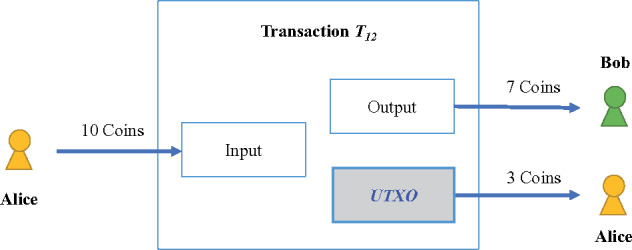Figure 4.

The ability of coin splitting and combining can further reduce the number of transactions and thus lower the burden of a blockchain network. To do this, intuitively one can just allow multiple inputs and multiple outputs.1 A special type of output is unspent transaction output (UTXO), ie, the “change” that is returned to the sender of the transaction and can be spent (ie, serve as an input) in the future transactions. In this example, Alice has 10 coins, which constitute the output of previous transactions. Alice sends 7 coins to Bob and receives 3 coins (UTXO) as change. After this transaction, the 3 coins (UTXO) are recorded in each full node. If Alice then tries to spend the original 10 coins instead of the 3 coins, each full node can detect such behavior by checking the UTXO list and reject the transaction accordingly. This way, UTXO helps identify double-spending. That is, each full node maintains a list of UTXO, and compares the input of new transactions against this list. If an input is not in the list, the transaction is considered double-spending and will be invalidated.57
